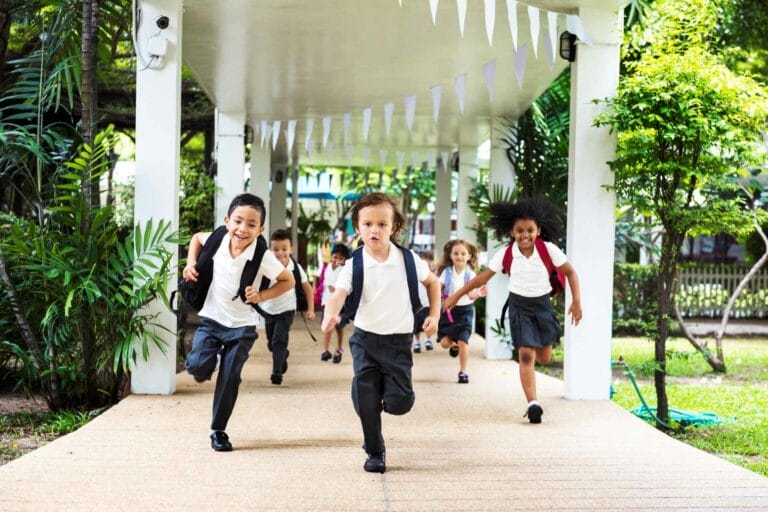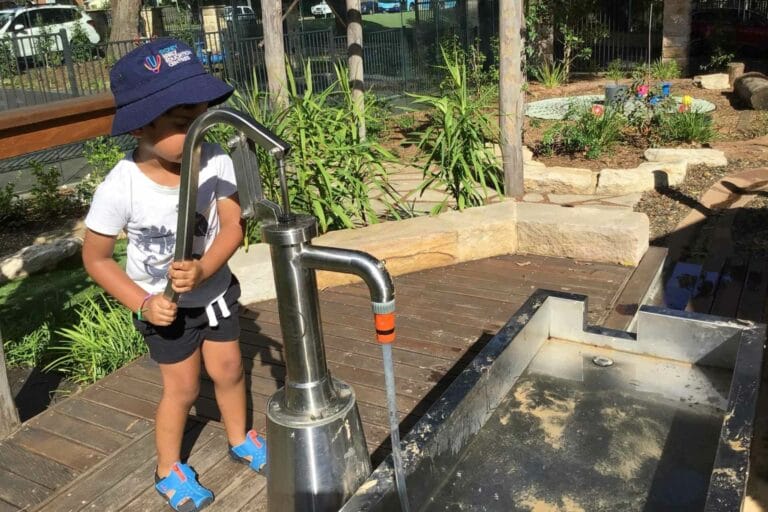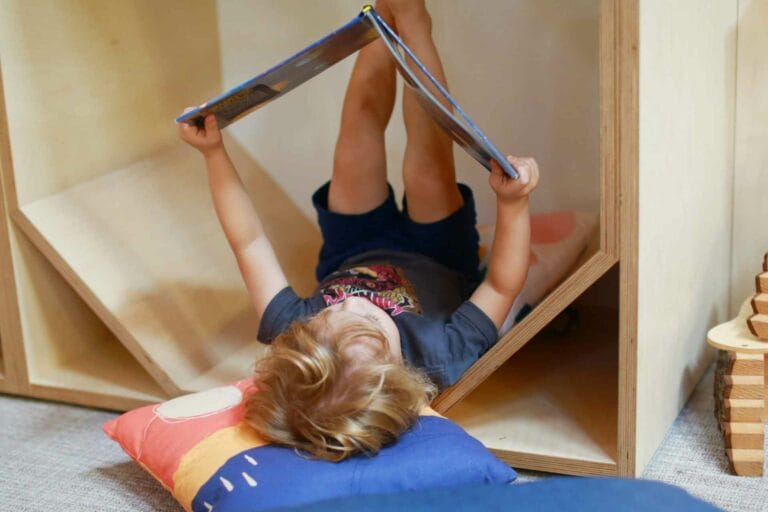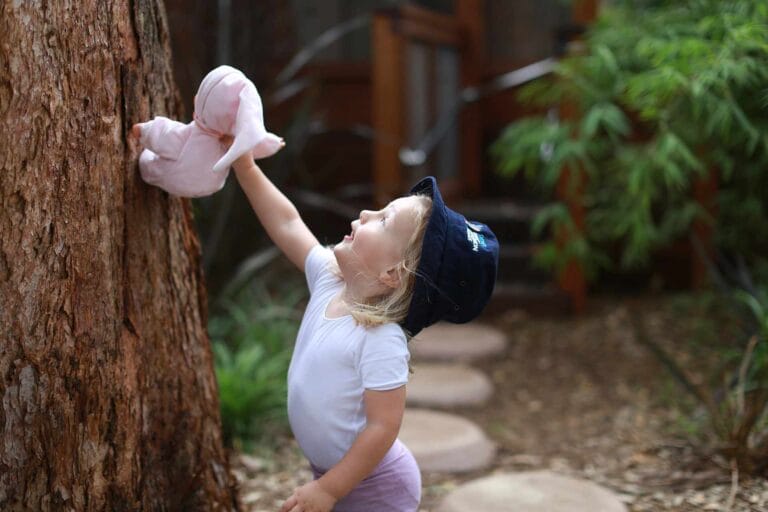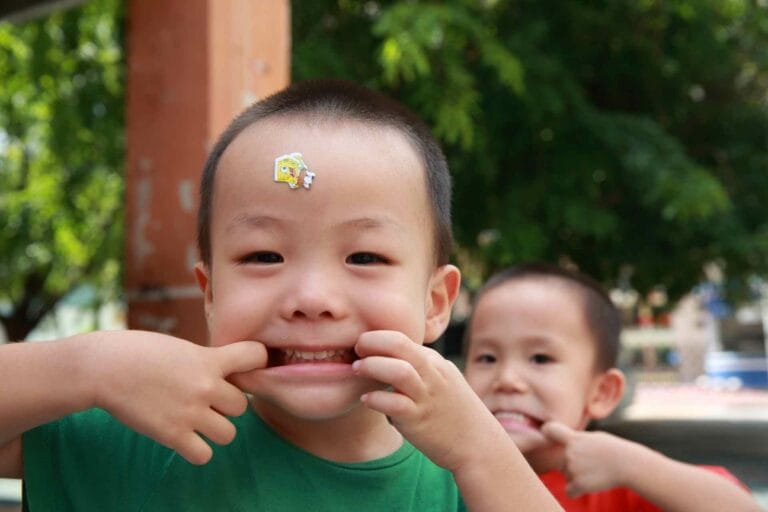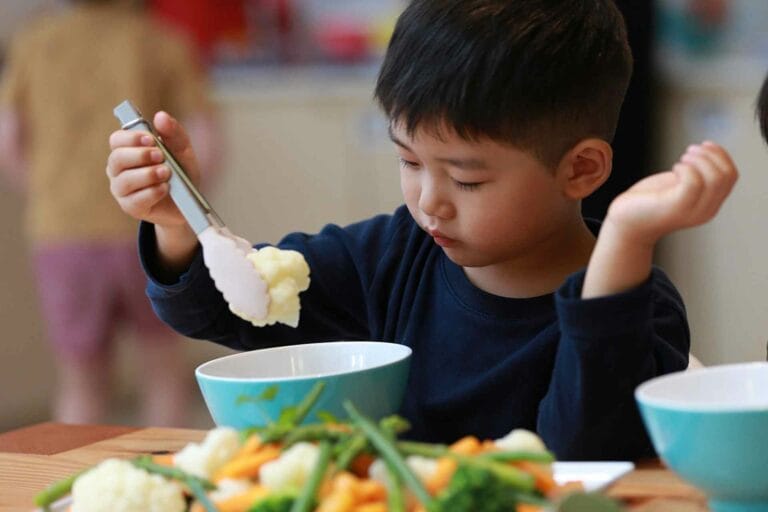8 ways to explore loose parts play
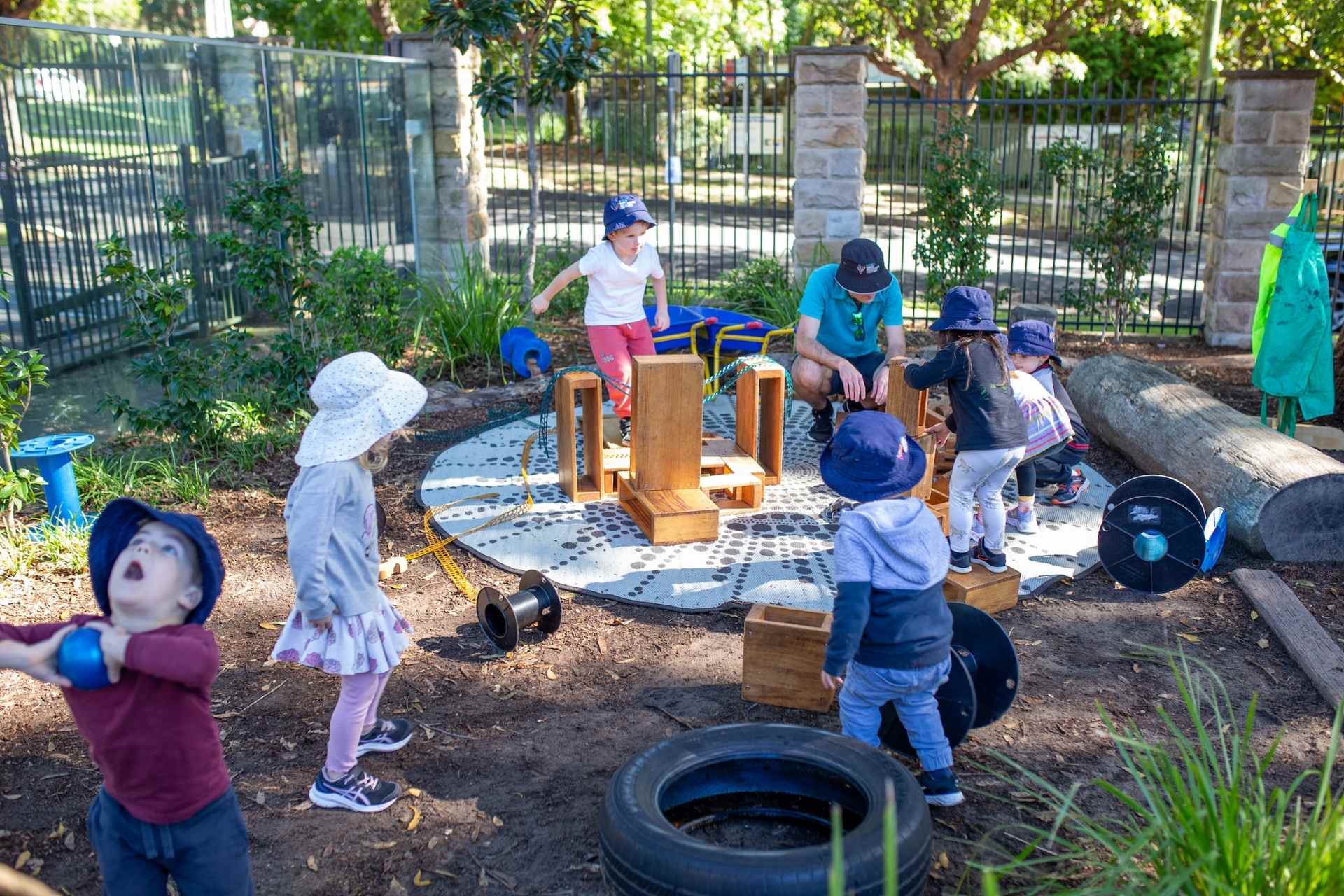
Loose parts are the tools of scientists, engineers, artists, and architects.”
(Beloglovsky & Daly, 2016)
In our Sydney Early Education Centres (SEEC) learning environments children use loose parts to create, problem solve, imagine, and explore the ‘what if’ possibilities. Our preschool children can be seen creating the next cave to explore, making a rocket ship that will take them to the moon, or solving a mathematical equation using loose parts such as tyres, cable reels, milk cartons, sticks, shells, and pipes.
Our early learners can be seen using loose parts such as scarves, pinecones, cardboard spools, and pots and pans to learn to communicate and play together, as well to create theories such as causality and schema learning. As adults, we might see loose parts as rubbish and junk, but the greatness of children is that they see the unlimited possibilities in everything. There is joy in how they can take a seemingly unwanted collection of objects and create something wonderful, all with just the power of their imagination.
What is the theory of loose parts?
Children have been playing with loose parts for many generations though it was British architect Simon Nicholson who first used the term ‘loose parts’ to describe materials that are variable which can be used and manipulated in different ways. Nicholson believed loose parts facilitate and empower creativity and exploration, much more than fixed learning environments with toys and resources that have limited uses.
All children love to interact with variables such as materials and shapes; smells and other physical phenomena, such as electricity, magnetism and gravity; media such as gases and fluids; sounds, music and motion; chemical interactions cooking and fire, and other people, and animals, plants, words, concepts and ideas. With all these things all children love to play, experiment, discover and invent and have fun. All these things have one thing in common, which is variables or ‘loose parts’”
(Simon Nicholson, 1971)
What are the benefits?
“Loose parts play is a crucial piece of the puzzle in the developmental skills your child needs as they learn and grow” (Gowrie). Some of the benefits include:
- Developing the children’s sense of independence as loose parts give them the freedom to explore materials autonomously and make the learning experiences their own.
- Promoting social-emotional development, including self-knowledge (learning through the use of different senses and movement), self-regulation, self-esteem, and social skills.
- Enhancing fine and gross motor skills as they pick up, hold and manipulate materials in different ways, as well as moving and using larger objects while playing.
- Developing language skills as they communicate their ideas and creations to their peers, educators and families.
- Developing their imagination, creative thinking, problem solving, inquisitiveness and abstract thinking by exploring the different materials and discovering new ways of playing with them.
- Learning the early concepts of engineering and physics – about weight, density and how things work.
- Developing a connection with the natural world around them which can deepen to nurturing a sense of responsibility for their environment and community.
Where can families get loose parts materials?
You can find many loose parts and materials around your house or out in nature. The possibilities are endless!

Here is a small list of loose parts play ideas:
- Natural materials such as pine cones, sticks, rocks, and leaves
- Craft items such as pipe cleaners, beads, buttons, sequins, cotton reels, paddle pop sticks and feathers
- Household items such as old pots and pans, wooden spoons, ice trays.
There are also some reuse and recycling centres available for loose parts that you may not find in your home or environment, for example, Reverse Garbage.
Despite so many advantages of loose parts play, safety aspects of objects need to be considered before giving loose parts to children. Some of these include:
- Size of materials, eg: ensuring they are not too small for children under three years old.
- Natural materials collected, eg: some plant parts can be toxic.
- Children’s allergies, eg: egg cartons may need to be avoided.
- Can they be explored by mouth by young children, eg. are there any sharp edges?
8 loose parts play ideas for families:
Loose parts are great open-ended resources, with no right or wrong way to play with them, encouraging children to create their own play and learning. Families can enhance their child’s learning and play with loose parts by doing experiences together such as:
- Going on a treasure hunt in the outdoor environment
- Creating an artwork, eg: making a sculpture using recycled paper, or using leaves as a tool to paint
- Building and constructing, including connecting and disconnecting, eg: with tape or glue
- Experimenting with different objects, eg: which items float or sink or what happens if you put a large rock on top of a smaller one?
- Sorting, classifying and counting objects of the same size, colour, shape, texture, etc.
- Moving to music using scarves or ribbons
- Creating musical instruments, eg; with tissue boxes and rubber bands, or plastic bottles filled with different items, etc
- Make up an impromptu story together using loose parts that your child chooses.
So next time you are doing a clean-up, ask yourself “Can this be used as loose parts?” Remember our educators at SEEC love to use loose parts in our curriculum so if you have any loose part materials at home that you no longer need, please feel free to donate them at one of our Sydney Early Education Centres. For example old pots, scarves, clothes, cooking utensils, shells, newspaper, timber scraps, milk containers or food boxes. If in doubt, please ask one of our educators ☺
References and further reading:
Beloglovsky, M., & Daly, L. (2016). Loose parts 2: Inspiring play with infants and toddlers. Redleaf Press.
Daly, L., & Beloglovsky, M. (2014). Loose parts: Inspiring play in young children (Vol. 1). Redleaf Press.
Nicholson, S. (1971). How not to cheat children – The theory of loose parts. Landscape Architecture.
https://www.fantasticfunandlearning.com/loose-parts-play-kids.html
https://www.gowriensw.com.au/thought-leadership/loose-parts-play
Want to know more about our service? You can book a tour or send us a message or explore our amazing purpose build early educations centres.

Written By
Antonela, NEEC’s Director
